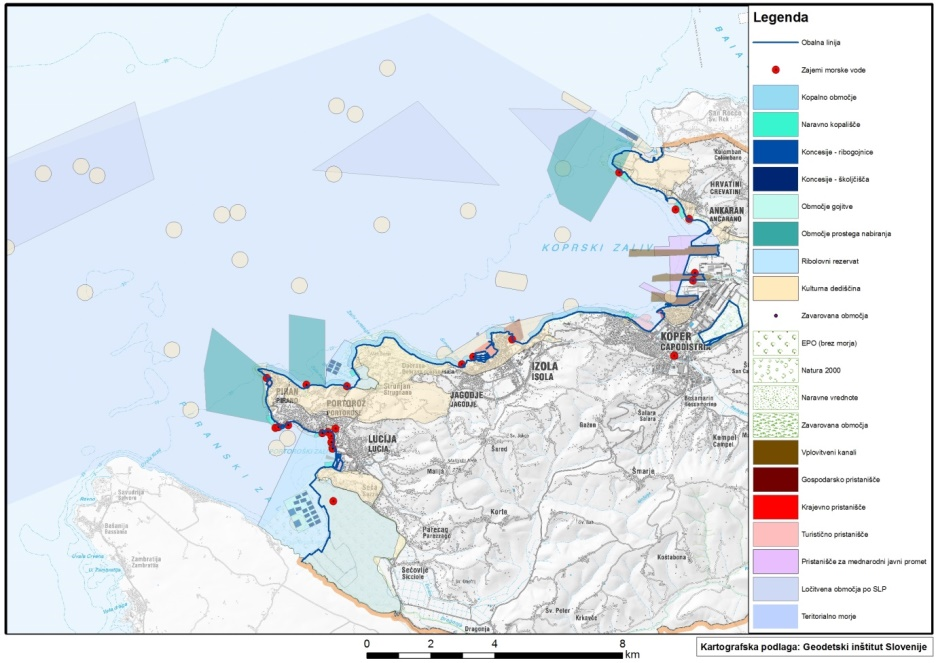Use and Spatial Planning of Coastal Waters
The presence of the sea defines a number of specific activities, for example industry, tourism, port activities, mariculture, fishing, etc. that are directly tied to the sea and to the use of the sea or are a related activity. By using the sea, these activities directly impact each other, competing and imposing various legal regimes on one another, which can lead to conflicts regarding sea use in relation to living environment protection objectives, natural ecosystems and landscapes and to issued water rights and decreased economic performance of some of the activities.
The development of each activity that is tied to sea use is directly linked to spatial planning, which should be consistent with the ecosystem approach.
The ecosystem approach to marine environment management is an essential element of the Marine Strategy Framework Directive (MSFD). Although the approach is internationally not uniformly defined, its general objective is to ensure that the collective pressure of human activities does not exceed the capacity of ecosystems to respond.
The ecosystem approach on the basis of the MSFD therefore becomes a legally binding principle for managing the marine environment.
For the most part, spatial planning on land has been directly and indirectly dictating sea use and the issuing of water rights on the coastline and at sea. In relation to marine environment management, several interests have appeared that can be divided into economic interests and public interest. In regard to a resource as important as the marine environment, economic interests, which mean development, are limited by public interest. Use that is in the public interest therefore represents the boundary condition in coordination. This is the reason coordination is performed both in water management and marine environment management (e.g. sustainable development mechanisms, methods of implementation and cooperation). Legislative regulation therefore ostensibly permits development, but only upon known boundary conditions, which are defined by the methods of implementation and cooperation.
Planning and managing sea use requires a great deal of decision-making on sea use allocation and zoning at sea. A clear set of principles and instructions is needed for this decision-making. Sea use management and planning at sea are not new approaches – e.g. nautical charts contain both elements of sea use and of zoning at sea, protected areas of nature and of cultural heritage, protected areas for fishing, etc. There are a number of graphical representations and specialised charts showing the seabed, the likely archaeological sites, important migration routes of fish species, depth and temperature and the transport channels. The use of uniform space, meaning both land and sea, should therefore be adapted to the environment in a quantitative and qualitative sense, which is also the basic principle of international conventions, while not neglecting socio-economic analyses of possible activities to support the decision-making on providing sustainable development.
As a specific three-dimensional space, the marine environment combines and connects the various uses that must be mutually coordinated in order to achieve sustainable use of the common space. For this purpose, the Marine Strategy Framework Directive stipulates (Articles 13(1) and 24 and Annex VI, points 3 and 4) that the action programme of the Marine Environment Management Plan needs to ensure spatial and temporal distribution controls for activities at sea and develop adequate tools for controlling the recorded activities. In terms of content, sea use is part of the initial assessment of the status of the sea that is used to establish records of existing sea use and includes spatial analysis and records on sea use and on issued water rights at sea, coastal areas, offshore lands and the narrow coastal strip. The spatial representation of sea use shows that the sea of the Republic of Slovenia features a great variety of activities that require the sea for operation as well as legal regimes that constitute restrictions on the use of the marine environment.

